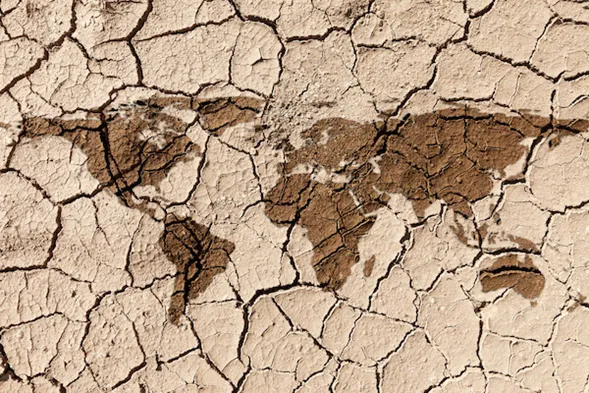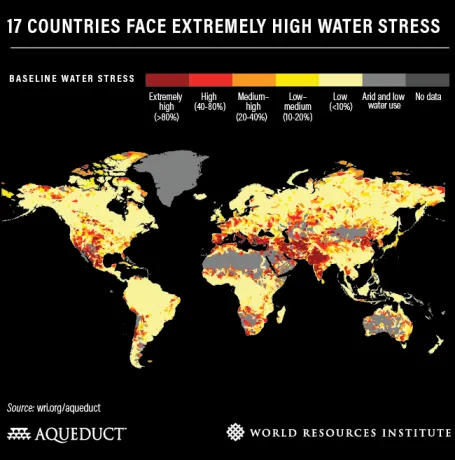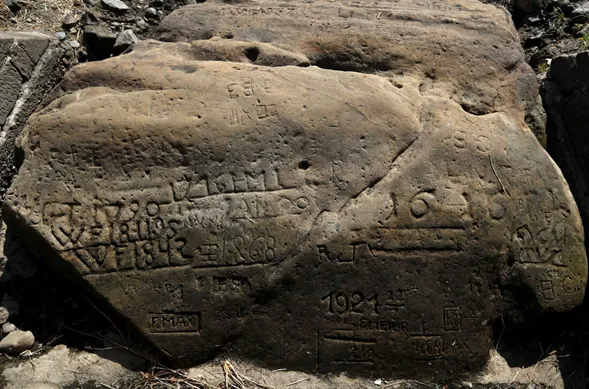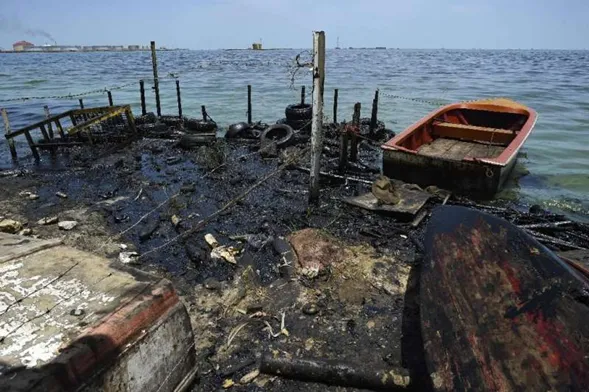The writing is on the wall, we can all see it, if we choose to do so. And no one is safe, not even the 'first world' with its ancient aqueducts.

Hi ecotrain friends, I hope you are doing well. For a long time, when we talked about drinking water scarcity, we always associated it with third world countries, such as Africa or some regions of Latin America, but times are changing, and now water scarcity is reaching the whole world. The signs are becoming more and more alarming, today, I will show you some of these signs.
Water scarcity and climate change.
Only 3 percent of the world's water is freshwater, of which 2.5 percent is inaccessible to humans because it is either in glaciers, in subway sources beyond our reach, or already highly polluted.
While for a long time the amount of available water has remained relatively stable because it was naturally purified by nature's hydrological cycles, since the industrial revolution and especially in the last century, the scarcity of freshwater sources has become noticeable. The human population has increased exponentially, but in addition to that, the water consumption of this population has doubled compared to a similar number in the past, due to the ability to bring water to large sectors of the population through modern aqueduct systems and above all, to the massive development of industry, the main consumer of fresh water.
In the United States, for example, official figures indicate that only 8 percent of the freshwater consumed is for domestic use, 33 percent is used for agriculture, and a monstrous 69 percent goes to industry.
To produce 1 smartphone you need more than 12,000 liters of water, for a pair of pants it would be 8,000, for 1 kilo of meat you need to use 15,000 liters.
While 1 kilo of vegetables requires only 300 liters and 1 kilo of fruit would be about 1000 liters on average.
What's more, the demand for food is increasing exponentially, by 2035 food production will have to grow by more than 50 percent, and water demand in all sectors will grow by approximately 55 percent by 2050.
According to UN figures, more than 4 billion people currently live in regions that experience freshwater scarcity at least 1 month a year.
2 billion people, or a quarter of the population, live in regions where there is inadequate freshwater supply.
But by 2040 1 in 4 children born will live in areas where there is extreme water scarcity, and as early as 2025 half of the population will live in regions with partial water scarcity.

[This map shows in red the regions of the world where water consumption there is reaching almost the entire available supply].
The signs have already appeared, and the consequences are starting to reach where they need to reach.
Recently in the news we are starting to see signs of water shortages in places where this did not used to be a concern. On the west coast of the united states, in the state of california, they have spent a couple of years with an endangered water supply, last year, in the midst of a drought the state government found it necessary to ration water to agricultural producers. https://www.pbs.org/newshour/nation/as-california-restricts-water-use-for-farmers-low-supply-levels-add-to-droughts-harsh-reality
This year, in the midst of another drought, and wildfires the likes of which have not been seen in a long time, rationing will reach the suburbs and cities as well.
https://www.reuters.com/world/us/southern-californians-told-restrict-lawn-watering-one-day-week-2022-04-28/ in a very partial way even clearly. But it is a sign...
In Europe already 20-30% of the population is starting to be partially affected due to water shortages. https://smartwatermagazine.com/news/european-environment-agency/30-europes-population-affected-water-stress
It is worth noting that during a particularly severe drought in 2018, the Ominous Hunger Stones appeared in Europe. These rocks with inscriptions dating back to the Middle Ages and perhaps earlier periods contained disturbing messages. For example
'If you see me weep'.
This message was seen on one such rock in the Czech Republic. But one in Germany was even more disturbing.
If you see this stone again, then you will cry, this is how low the water was in 1417'.

Then it is clear the intention of the messages left centuries ago by the inhabitants of the region, the rocks, in normal situations should be submerged, but in a time of terrible drought, you will see them, and then you will know that you are in a bad time.
Satellite images indicate that the Mediterranean region, which spans regions between Europe, the Middle East and Africa, is warming much faster than the rest of the world. https://www.downtoearth.org.in/news/climate-change/the-mediterranean-is-warming-three-times-more-than-the-oceans-study-
77383#:~:text=The%20Mediterranean%20is%20warming%20two,the%20coast%2C%20the%20researchers%20noted.
Global warming will affect us all, including the first world, then, perhaps, we will see decisive action. Or maybe not, who knows...
We are not lucky children.
I live in a region where water scarcity is our daily bread, although it is not terrible and we have learned to live with it and adapt, it is not necessarily pleasant, but it breaks my heart to see how bad it is in some regions of Africa with the shortage of drinking water, and to think that things will get worse is certainly worrying.
Another thing that I have had to see first hand in my short life is the destruction of massive fresh water sources by industries, especially the oil industry, the case in point, the Maracaibo Lake, the largest in Latin America. Salinized to build a passage for cargo ships and then polluted with millions of liters of oil...

I don't want anyone else to have to live that... but maybe, it has to happen, maybe it's the only way for humanity to learn...
Thank you for reading, I hope you liked it... and if you did, please support me with your vote. Please, support me with your vote. And remember... the signs are there, ignoring them is a conscious choice that can have terrible consequences.